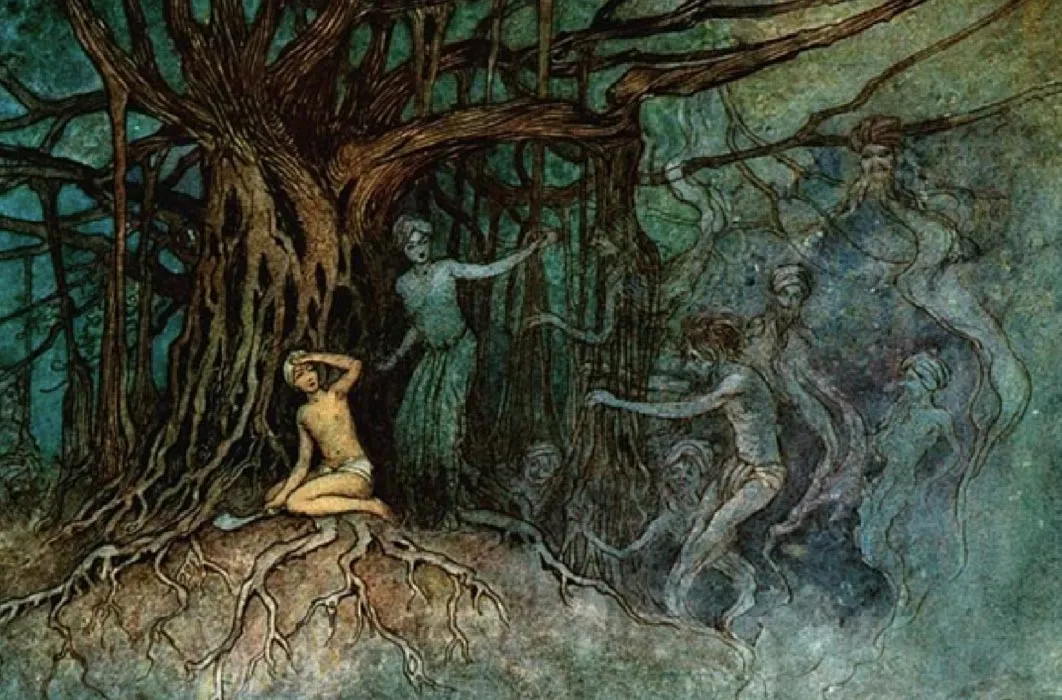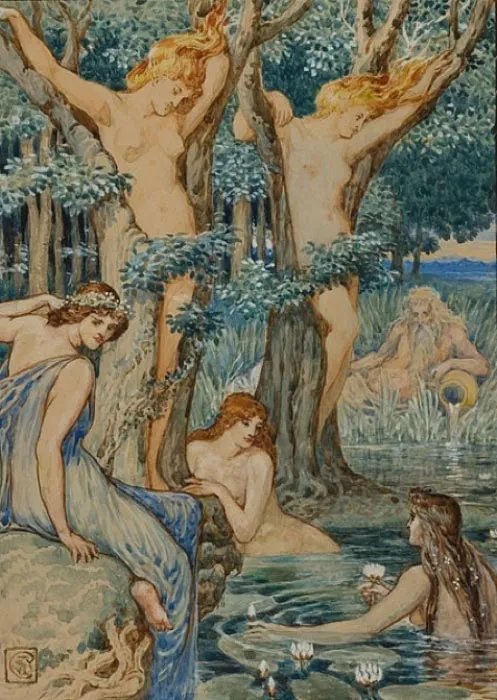https://www.ancientoriginsunleashed.com ... cred-trees

Numerous myths, ubiquitous to great civilizations spanning the globe, reflect a deep-rooted belief in an intimate connection between a human being and a tree. The Homeric Hymn to Aphrodite proclaims that when the tree is injured, the tree nymph also hurts, “…but when the fate of death is near at hand, first those lovely trees wither where they stand, and the bark shrivels away about them, and the twigs fall down, and at last the life of the Nymph and of the tree leave the light of the sun together”.

Nyads and Dryads by Walter Crane (1845–1915) (Public Domain)
The Mesopotamians, Greeks, Egyptians and even the Maya, all recognized sacred trees’ connectedness to humans. The oldest Hellenic oracle, the oak of Dodona in Epirus in northwestern Greece, was tended by priests who slept on the ground by the tree. During classical antiquity, priests in the sacred grove interpreted the rustling of the oak leaves to determine actions to be taken. The theme of how a person’s life is intrinsically connected to a tree so that the person would suffer when the tree withers or is injured, or even the concept of a tree being an external soul of a person’s body, is found in the ancient Egyptian Tales of Two Brothers around 1185 BC. In this fable, one of the brothers leaves his heart on the top of the flower of the acacia and falls dead when the tree is cut down.
In Mesopotamia, date palms were worshipped as it was an important source of food. As the date palm is dioecious with male and female trees, the pollen must be transferred between the genders for fruit formation. Hammurabi’s ancient Babylonian code even mentioned very specific punishments for individuals who did not pollinate their date palms, even designating special guardians to pollinate these trees by hand. These guardians would take a male plant, climb up a female’s trunk and smear the pollen from the male plant onto the female’s flowers to ensure maximum yields. In the sacred cacao groves of the Maya, trees such as figs were also preserved, while in the feng-shui forests of Hong Kong, the family Moraceae is the most dominant taxon.
